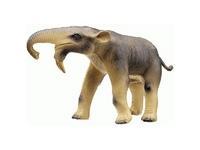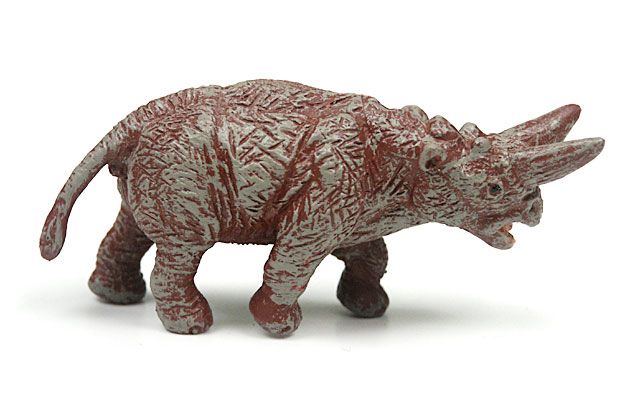
September 14, 2009
A new French cryptozoology book, Guide Des Animaux Cachés, due out in late October 2009, discusses some interesting evidence for prehistoric elephants still existing in Africa. (The book will be available for sale in the new museum shop at the public location of the International Cryptozoology Museum.)
The author Philippe Coudray theorizes that surviving extinct elephants may exist by pointing to a piece of “rare physical evidence,” found in Ethiopia in 1904, for his radical new stance in cryptozoology. He notes that the discovered “tusk” measuring “72 cm along its curve and 56 cm in a straight line” was found “unfossilized,” demonstrating that this animal “had not lived that very long ago.”
Furthermore, he points out that it is “ivory; it is a tooth, and not a horn. According to the structure of its ivory, zoologists think it belongs to an animal in the proboscideans (elephant) family.”
The proboscideans are species of the large, herbivorous mammals, of the order Proboscidea, that have a trunk; that is, the elephants.
As the structure of the tusk appears to point downward, as shown in Coudray’s illustration (below), the species of elephant may be one known in the fossil record, as the guide mentions. This prehistoric elephant is known as the Deinotherium, which was the size of the present African elephant. The cryptid species may be smaller.
Philippe Coudray’s book gives a variety of cryptoelephant drawings, shown below, which I have mixed here with various proboscidean replicas.

The cover of Philippe Coudray’s new book.

Philippe Coudray drawing of the Deinotherium-like African cryptid.

Bullyland’s Deinotherium. (My quest for this rare German-made replica continues.) Radman photo, with permission.

Bullyland’s Deinotherium and other related species. Radman photo, with permission.

Wild Safari’s well-done collectibles, Arsinoitherium (a rhino-like elephant relative, above) and Ambelodon (below).

Wild Safari’s entire collection of extinct mammals, plus the Safari Ltd Carnegie mammoth. Boki photo, with permission.

Another Philippe Coudray drawing of a cryptid elephant reported in the shallow waters of Zaire.
More images from Guide Des Animaux Cachés and more info on the book here.
(Thanks for translation assistance from Patrick Huyghe.)
∆∆∆∆∆∆∆∆∆∆∆∆∆∆∆∆∆∆
Support the new, openly public, physical location of the International Cryptozoology Museum in downtown Portland, Maine. Help us meet the rent and other new expenses for this great adventure.
Please click on the button below (not the one up top) to take you to PayPal to send in your donation.
If you wish to send in your donation via the mails, by way of an international money order or, for the USA, via a check or money order, please use this snail mail address:
Loren Coleman
International Cryptozoology Museum
PO Box 360
Portland, ME 04112
Thank you, and come visit the museum at 661 Congress Street, Portland, Maine 04101, beginning November 1, 2009!!
About Loren Coleman
Loren Coleman is one of the world’s leading cryptozoologists, some say “the” leading living cryptozoologist. Certainly, he is acknowledged as the current living American researcher and writer who has most popularized cryptozoology in the late 20th and early 21st centuries.
Starting his fieldwork and investigations in 1960, after traveling and trekking extensively in pursuit of cryptozoological mysteries, Coleman began writing to share his experiences in 1969. An honorary member of Ivan T. Sanderson’s Society for the Investigation of the Unexplained in the 1970s, Coleman has been bestowed with similar honorary memberships of the North Idaho College Cryptozoology Club in 1983, and in subsequent years, that of the British Columbia Scientific Cryptozoology Club, CryptoSafari International, and other international organizations. He was also a Life Member and Benefactor of the International Society of Cryptozoology (now-defunct).
Loren Coleman’s daily blog, as a member of the Cryptomundo Team, served as an ongoing avenue of communication for the ever-growing body of cryptozoo news from 2005 through 2013. He returned as an infrequent contributor beginning Halloween week of 2015.
Coleman is the founder in 2003, and current director of the International Cryptozoology Museum in Portland, Maine.
Filed under Books, Breaking News, Cryptomundo Exclusive, Cryptotourism, CryptoZoo News, Expedition Reports, Eyewitness Accounts, Footprint Evidence, Megafauna